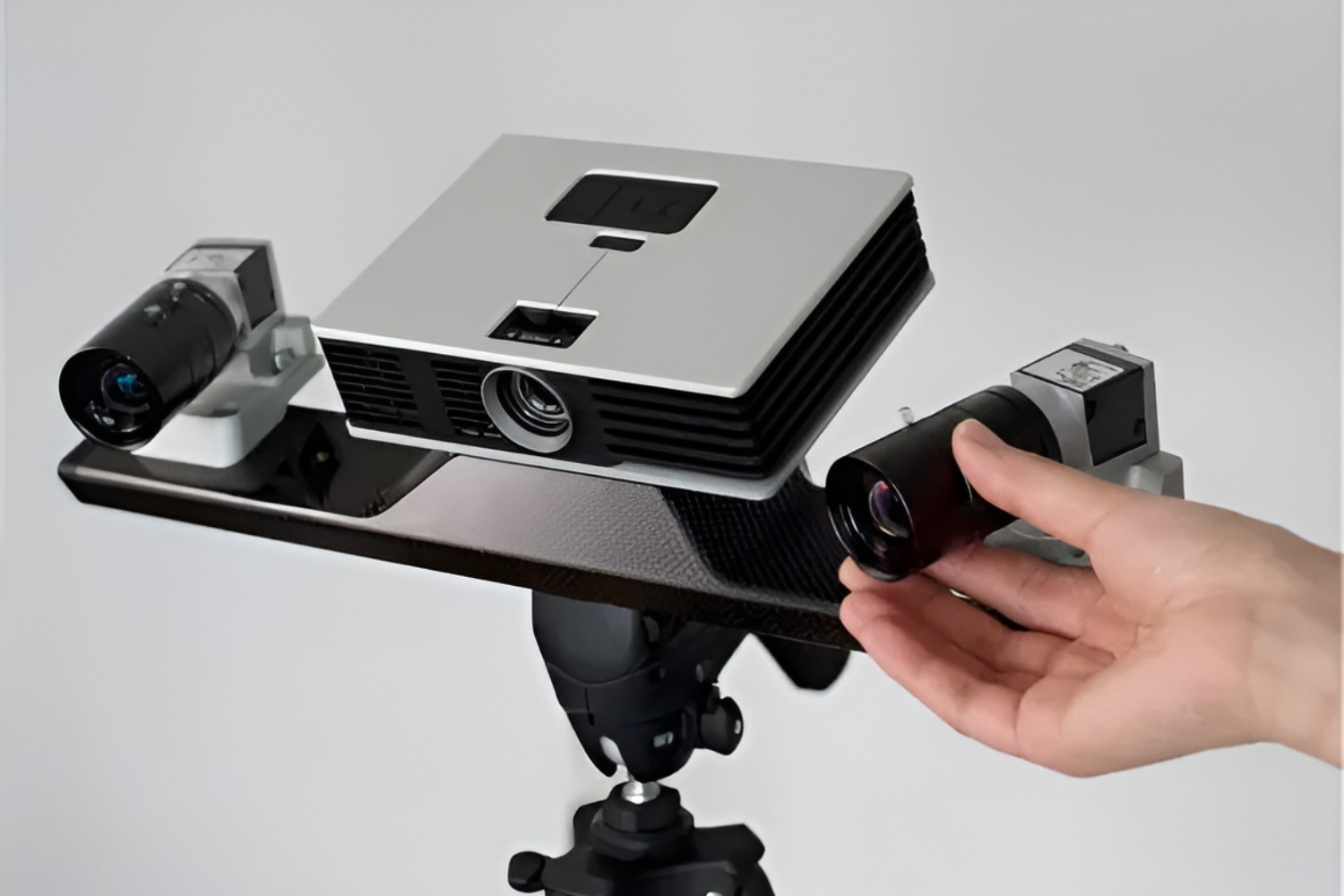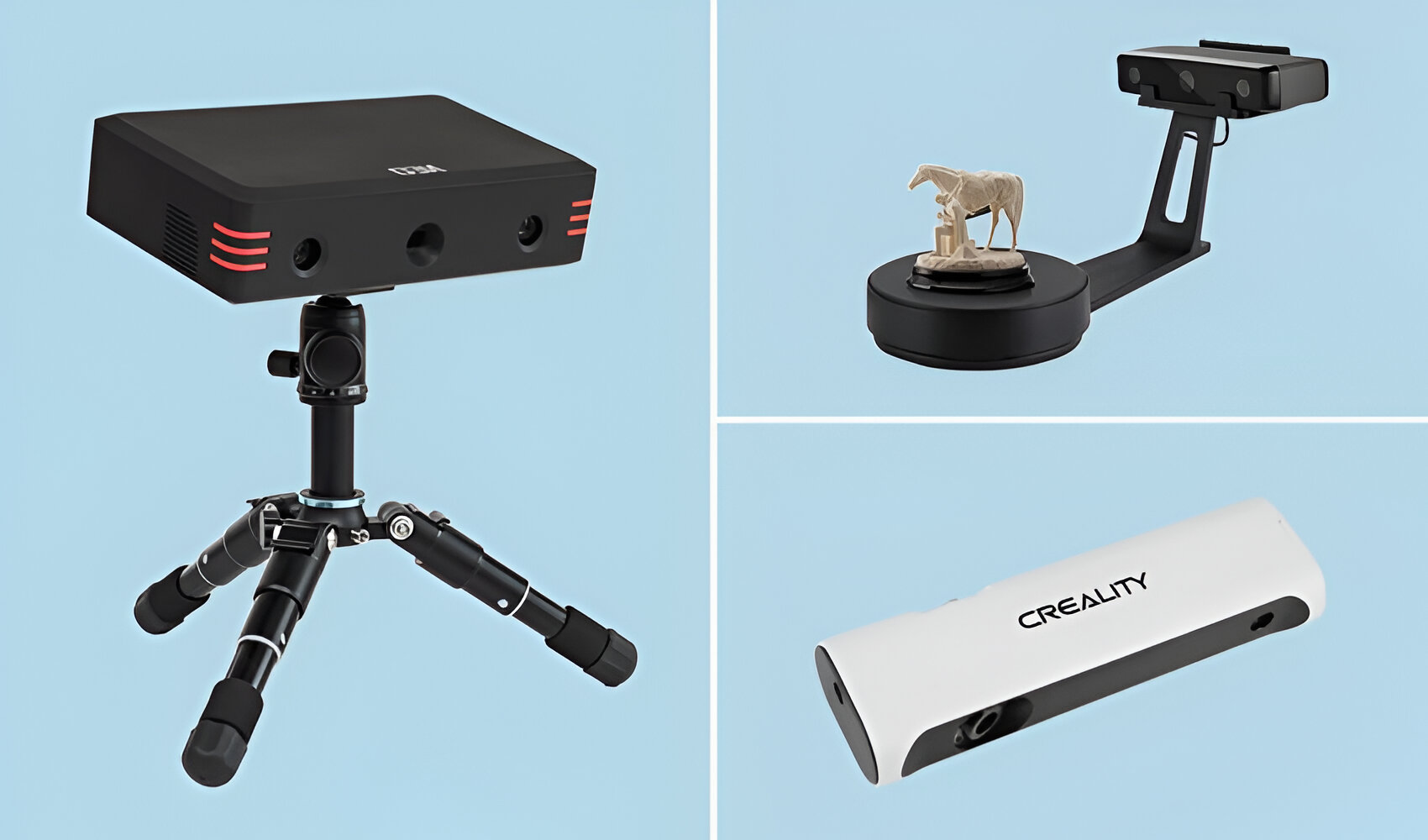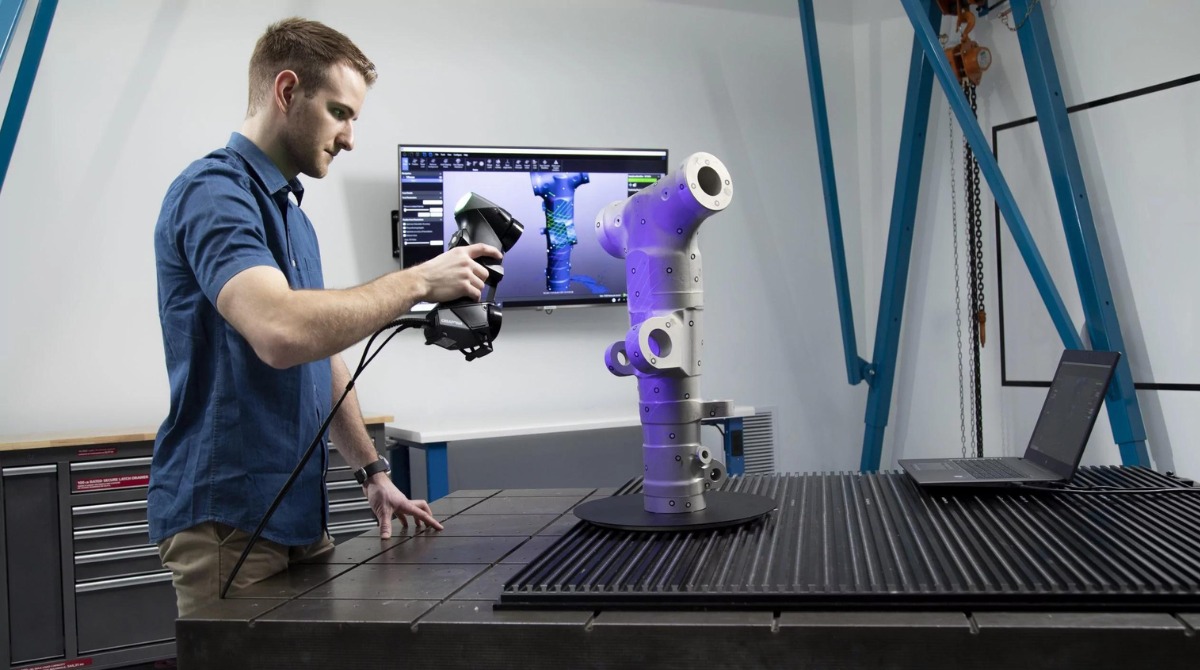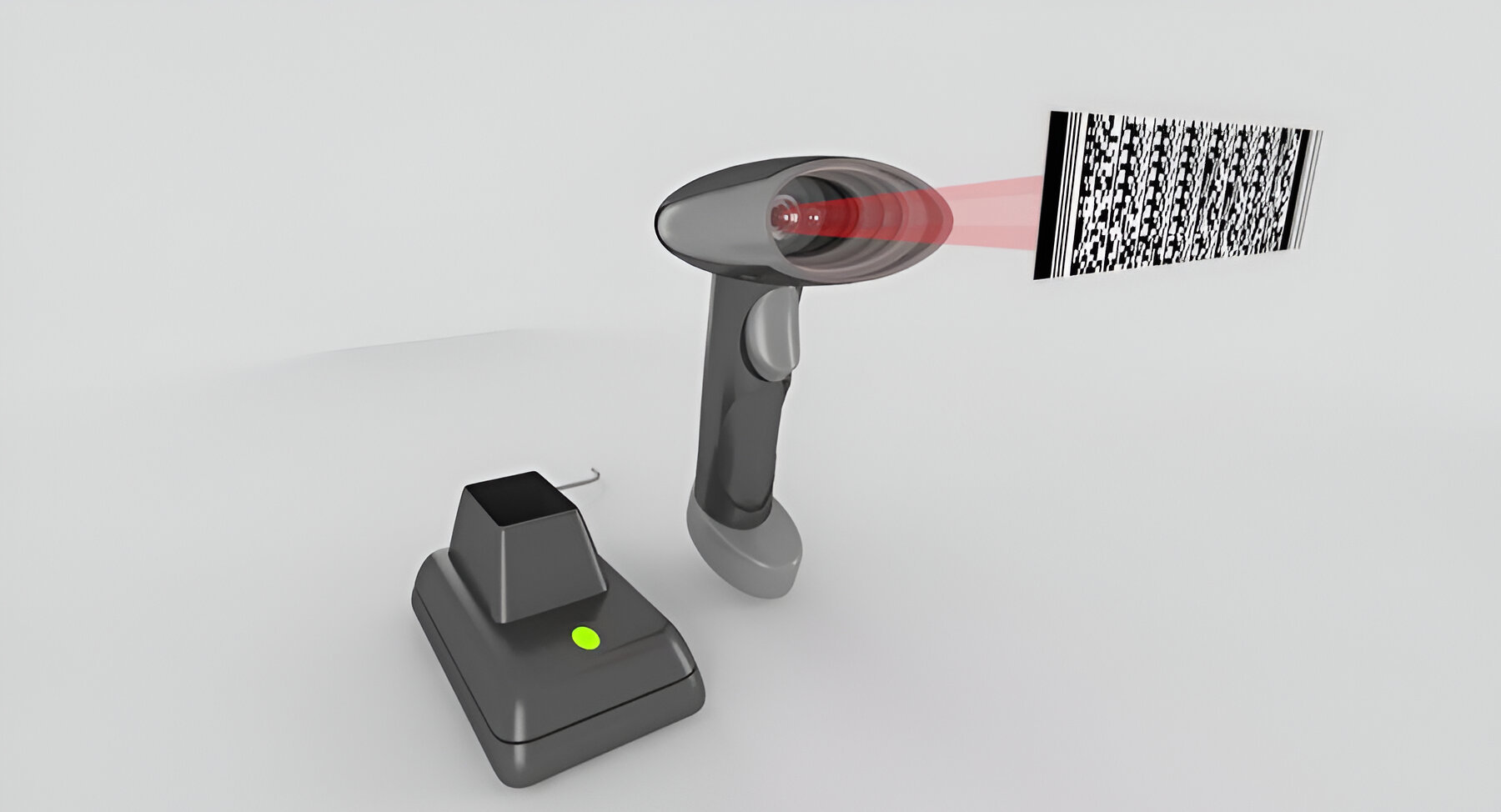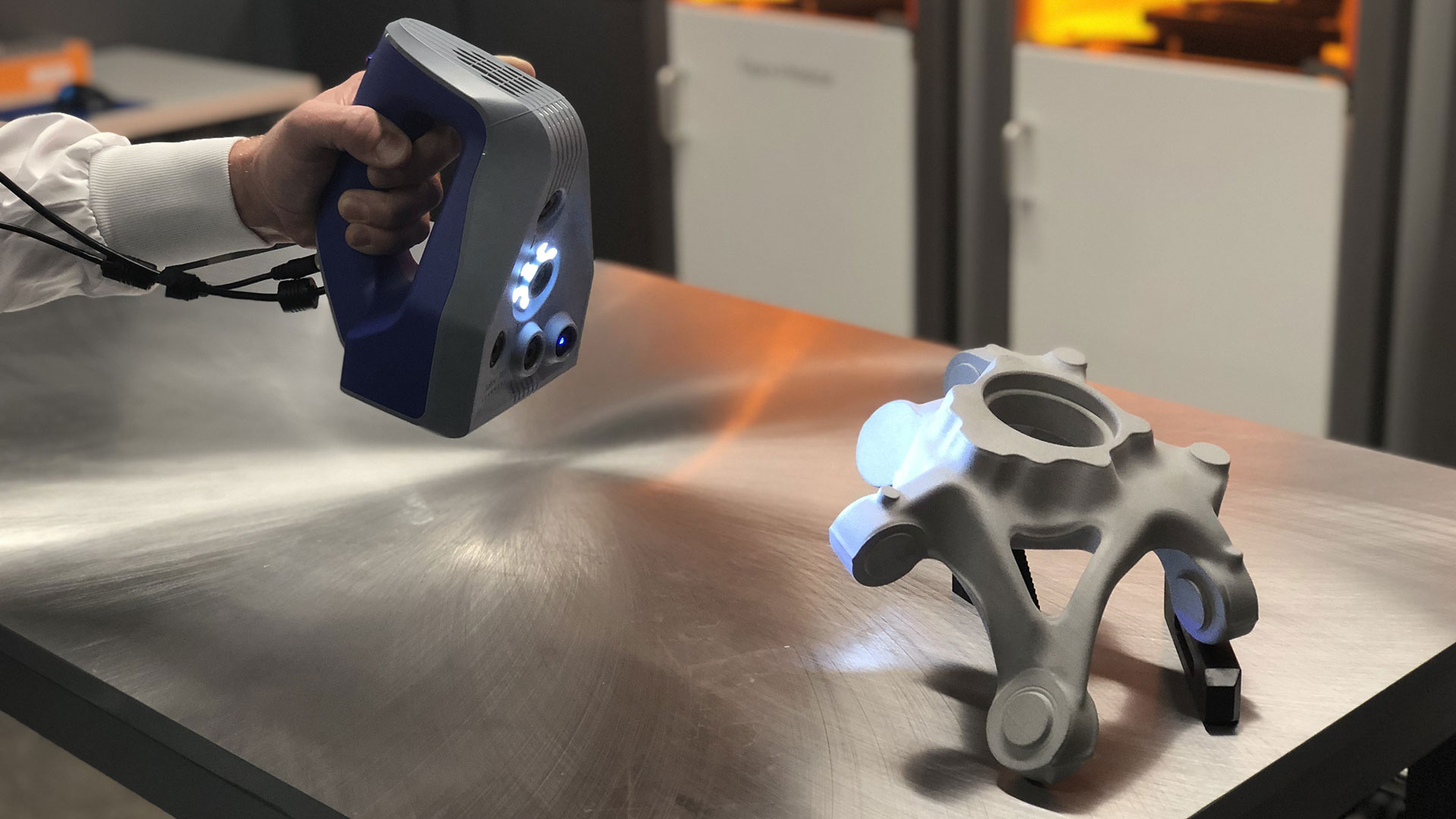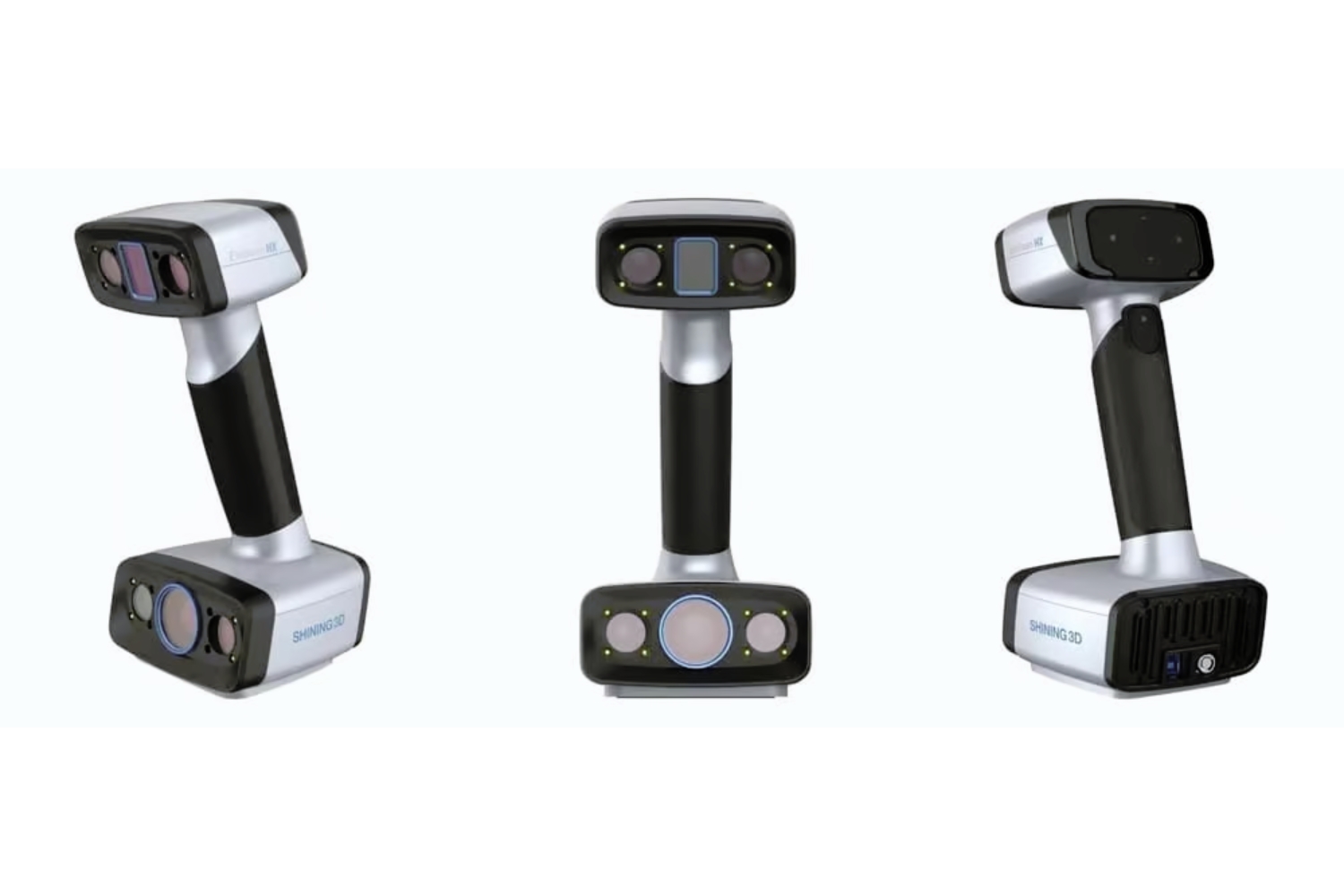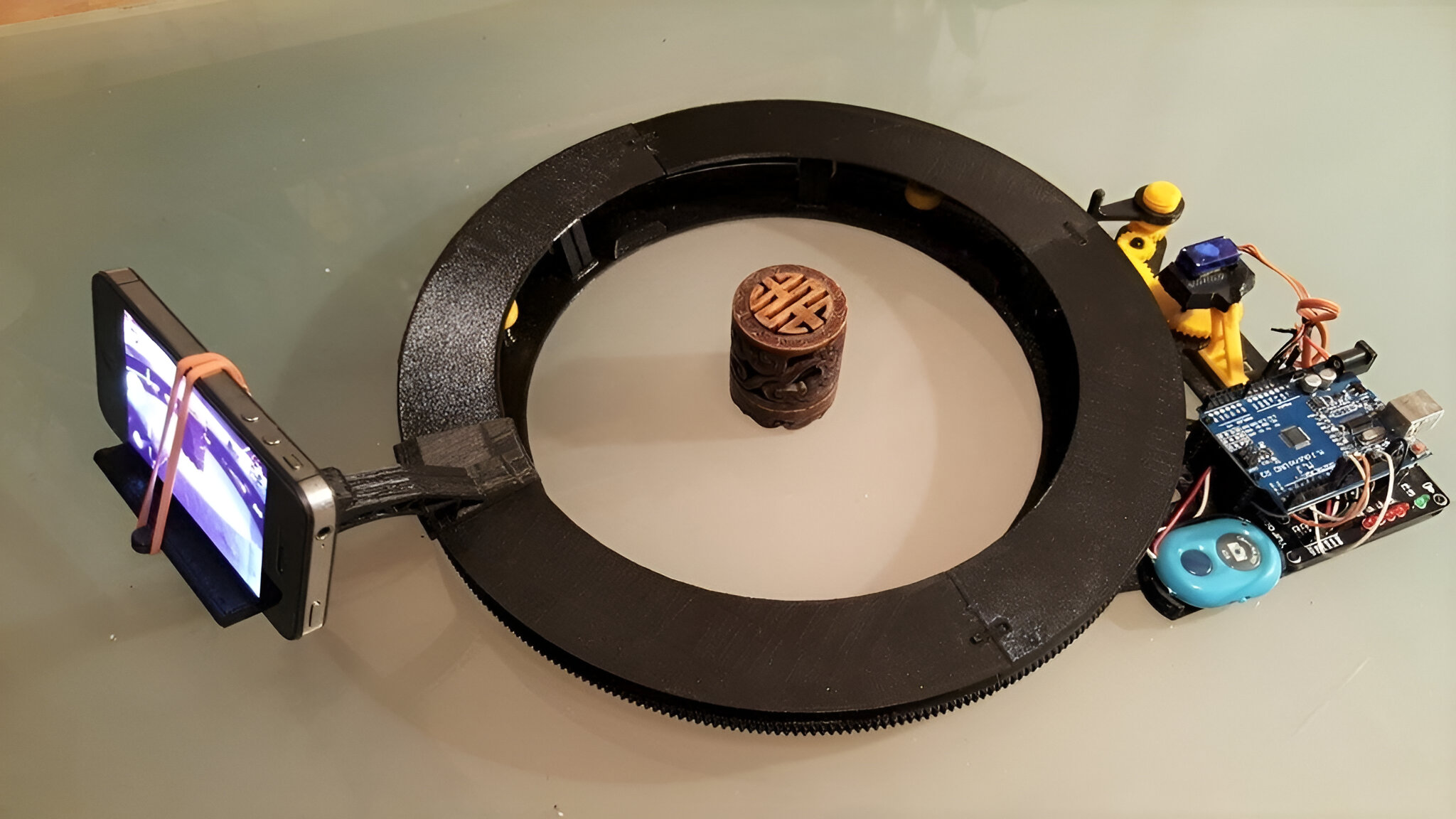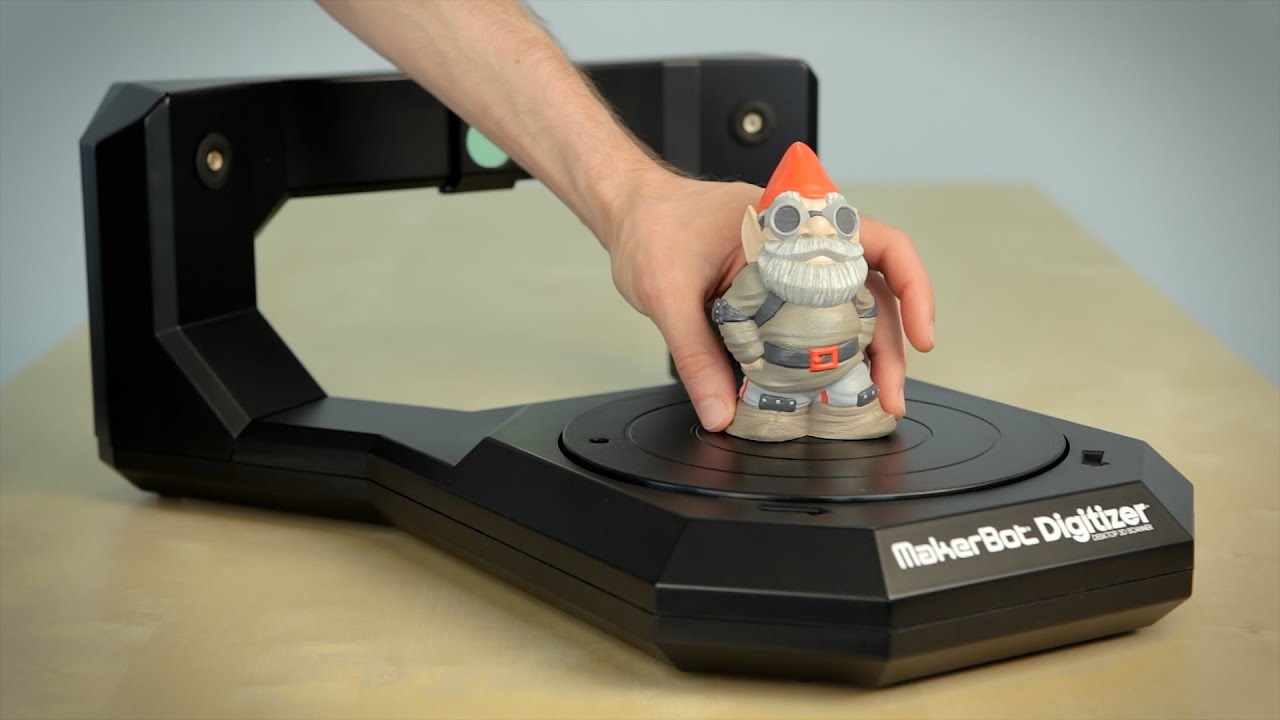Introduction
Technology has revolutionized the way we capture and interpret the world around us. One such technology that has gained immense popularity in recent years is 3D scanning. 3D scanning allows us to convert real-world objects into digital models, opening up a wide range of applications in industries such as manufacturing, entertainment, healthcare, and more.
Among the various techniques used for 3D scanning, structured light 3D scanning stands out as a powerful and precise method. It offers high-resolution, detailed scans that are essential for many industries and applications. In this article, we will explore the concept of structured light 3D scanning, its working principles, advantages, limitations, and popular applications. We will also provide some tips for choosing the right structured light 3D scanner and using it effectively.
Structured light 3D scanning is based on the principle of projecting a structured pattern of light onto an object and capturing its deformation for 3D reconstruction. By analyzing the distortions in the projected pattern, the scanner can calculate the object’s shape and texture with exceptional accuracy. This technique allows for the creation of highly detailed and precise digital models that can be used for various purposes, from quality control in manufacturing to virtual reality applications in gaming.
Structured light 3D scanning has become increasingly popular due to its versatility and speed. It provides a non-contact and non-destructive solution for capturing 3D data, making it suitable for fragile or valuable objects. Moreover, it has a wide range of applications, including reverse engineering, product design, animation and visual effects, archeological preservation, and even medical imaging.
Throughout this article, we will delve deeper into the inner workings of structured light 3D scanning, its benefits, and its limitations. We will also explore real-world applications of this technology and discuss how to choose the right structured light 3D scanner for your specific needs. So, let’s dive in and discover the fascinating world of structured light 3D scanning!
Understanding 3D Scanning
Before we delve into the specifics of structured light 3D scanning, let’s first gain a better understanding of the broader concept of 3D scanning itself. At its core, 3D scanning is the process of capturing the shape, size, and texture of real-world objects and converting them into digital 3D models.
Traditionally, objects were represented in 2D through photography or drawings. While these methods can provide visual representations, they lack the depth and spatial information that are crucial for certain applications. 3D scanning bridges this gap by capturing a complete 3D representation of an object, including its volumetric data.
There are several techniques used in 3D scanning, each with its own advantages and limitations. Some common techniques include laser scanning, photogrammetry, time-of-flight scanning, and structured light scanning. Each technique utilizes different principles, tools, and algorithms to achieve accurate 3D scans.
Regardless of the technique used, the process of 3D scanning typically involves three key steps: acquisition, registration, and post-processing. In the acquisition stage, a 3D scanner captures multiple data points or measurements from the object’s surface using various sensors or imaging devices. These measurements can be obtained through lasers, cameras, or other sensing technologies depending on the scanning technique.
Once the data is acquired, it needs to be registered or aligned to create a unified 3D model. This involves merging the individual data points or images into a single coordinate system, ensuring accurate spatial relationships between them. Registration can be performed through manual alignment or automated algorithms.
Finally, in the post-processing stage, the acquired data is cleaned, refined, and converted into a usable 3D model format. This may involve removing noise, filling gaps, smoothing surfaces, or enhancing the overall quality of the scan. Post-processing can be done using specialized software or 3D modeling tools.
Overall, 3D scanning allows us to capture real-world objects with great precision and detail, enabling a wide range of applications in various industries. It provides a powerful tool for accurate measurement, reverse engineering, virtual reality, digital preservation, and more. Now that we have a general understanding of 3D scanning, let’s dive into the specifics of structured light 3D scanning and explore its unique advantages and applications.
How Does Structured Light 3D Scanning Work?
Structured light 3D scanning is a technique that utilizes the projection of a patterned light onto an object to capture its 3D shape. This method relies on the principle of triangulation, where the relationship between the projected pattern, the camera, and the object’s surface is used to calculate depth information.
The process begins by projecting a known pattern of light onto the object. The pattern can be a series of lines, grids, or random dots, depending on the specific scanner and application. As the pattern hits the object’s surface, it undergoes deformation based on the object’s shape and curvature.
Next, a camera or sensor captures images of the deformed pattern. The captured images are then analyzed to determine the distortion in the pattern caused by the object’s surface. This distortion provides information about the object’s depth and surface geometry.
The 3D scanner’s software processes the images and calculates the 3D coordinates of each point on the object’s surface. By triangulating the position of each point using the known pattern projection, the scanner creates a dense point cloud that represents the object’s 3D shape.
To improve accuracy, structured light 3D scanning often involves multiple captures from different viewpoints. By capturing the object from different angles, the scanner can gather more data and enhance the overall quality of the 3D model.
One key advantage of structured light 3D scanning is its ability to capture color information along with the geometry of the object. This is achieved by using a camera that captures both the structured light pattern and the object’s texture simultaneously.
Overall, structured light 3D scanning offers a fast and accurate method for capturing detailed 3D models. Its ability to capture color information along with geometry makes it a valuable tool in industries such as product design, quality control, animation, and virtual reality.
Now that we have a basic understanding of how structured light 3D scanning works, let’s explore the advantages and limitations of this technique in the next sections.
Advantages of Structured Light 3D Scanners
Structured light 3D scanners offer several advantages that make them a popular choice in many industries. Here are some of the key advantages of structured light 3D scanners:
Precision and Accuracy:
Structured light 3D scanning provides high precision and accuracy in capturing object geometry. The triangulation method used in this technique allows for precise measurements, enabling accurate reproduction of the object’s shape, edges, and fine details. This level of precision is crucial in industries such as manufacturing, where precise measurements are necessary for quality control and reverse engineering.
Speed and Efficiency:
Structured light 3D scanners are known for their fast scanning speed. They can capture millions of data points in a matter of seconds or minutes, depending on the size and complexity of the object. This efficiency makes structured light scanners ideal for scanning large objects or for applications that require frequent scanning, such as inline inspections in manufacturing processes.
Non-Contact Solution:
Structured light 3D scanning is a non-contact method, meaning it doesn’t require physical contact with the object. This makes it suitable for scanning delicate or fragile objects that may be damaged by traditional contact-based scanning methods. It also minimizes the risk of introducing errors or distortions during the scanning process, ensuring accurate representations of the object’s surface.
Color Capture:
One notable advantage of structured light 3D scanning is its ability to capture not only the geometry but also the color information of the object. By using a camera capable of capturing both the structured light pattern and the object’s texture, structured light scanners can create 3D models with realistic and vibrant colors. This is particularly advantageous in applications such as animation, virtual reality, and digital preservation, where accurate representation of color is essential.
Versatility:
Structured light 3D scanners are highly versatile, capable of scanning objects of various sizes, shapes, and materials. They can be used for small-scale objects like jewelry or intricate parts, as well as large-scale objects like automotive components or architectural structures. This versatility makes structured light scanners suitable for a wide range of applications in industries such as aerospace, automotive, art and cultural heritage, and more.
By leveraging these advantages, structured light 3D scanners have become integral tools in industries that require precise 3D measurements and geometric data. However, like any technology, structured light scanning also has its limitations, which we will explore in the next section.
Limitations of Structured Light 3D Scanners
While structured light 3D scanners offer many advantages, it is important to be aware of their limitations to ensure accurate and reliable results. Here are some of the limitations of structured light 3D scanners:
Surface Reflectivity:
Structured light 3D scanning relies on the reflection of light off the object’s surface. If the object has highly reflective or specular surfaces, the light pattern may be distorted or completely lost, resulting in incomplete or inaccurate scans. To mitigate this issue, additional techniques, such as using anti-reflective sprays or applying matte coatings, may be necessary. However, these methods may not always be feasible or practical for certain objects or materials.
Ambient Lighting Conditions:
The accuracy of structured light 3D scanning can be affected by ambient lighting conditions. The scanner may struggle to differentiate between the projected light pattern and the ambient light in the environment. This can result in inaccuracies or errors in the captured data. To overcome this limitation, controlled lighting conditions or the use of external light sources may be required, which may increase the complexity and cost of the scanning process.
Limited Range:
Structured light 3D scanners have a limited range at which they can accurately capture the object’s geometry. If the object is too far from the scanner, or if it is too close and falls within the minimum working distance, the scanner may struggle to capture precise measurements. This limited range can be challenging when scanning large objects or when high levels of detail are required for small objects. It may require multiple scans or the use of different scanning equipment to capture the entire object accurately.
Complex Surfaces:
Objects with complex surfaces, such as those with deep crevices, holes, or intricate textures, can pose challenges for structured light 3D scanners. The projected light pattern may not be able to fully reach or accurately capture the depth and details of such surfaces, leading to incomplete scans or inaccurate representations. Additional techniques, such as using different scanning perspectives or combining multiple scanning methods, may be necessary to overcome these challenges and obtain more comprehensive results.
Cost:
Structured light 3D scanners generally have higher costs compared to other scanning techniques. The advanced technology, precision, and speed offered by these scanners often come with a higher price tag. This can be a limiting factor for individuals or small businesses with budget constraints. However, it is important to consider the specific requirements and intended applications before investing in a scanner to ensure the cost aligns with the expected benefits and ROI.
Despite these limitations, structured light 3D scanners remain powerful tools for capturing precise 3D data. By understanding and addressing these limitations, users can optimize the scanning process and achieve accurate results for their specific applications.
Applications of Structured Light 3D Scanners
Structured light 3D scanners have a wide range of applications across various industries. Here are some of the key areas where structured light scanning is utilized:
Product Design and Development:
Structured light 3D scanning is widely used in product design and development processes. It allows designers to capture the shape and dimensions of physical objects and convert them into digital models for further analysis, prototyping, and optimization. By scanning prototypes and existing products, engineers can perform reverse engineering to understand their design intent and make necessary modifications or improvements.
Quality Control and Inspection:
The high precision and accuracy of structured light 3D scanners make them instrumental in quality control and inspection processes. By comparing the scanned 3D model of a manufactured object with its intended design specifications, manufacturers can identify deviations, deformities, or defects that may affect the product’s performance or functionality. This helps ensure consistent product quality and reduces the chances of faulty or non-compliant products reaching the market.
Animation and Visual Effects:
Structured light 3D scanning plays a crucial role in the creation of realistic and immersive animations and visual effects in the entertainment industry. By scanning actors, props, or real-world objects, animators and visual effects artists can create accurate digital replicas that seamlessly blend with the virtual environment. This technique is commonly used in movies, video games, virtual reality experiences, and augmented reality applications.
Archaeology and Cultural Heritage Preservation:
Structured light 3D scanning has become an invaluable tool in the field of archaeology and cultural heritage preservation. It enables the capture of precise 3D models of artifacts, sculptures, historical buildings, and archaeological sites. These models serve as digital archives, allowing researchers to study and analyze the objects without risking damage to the originals. Additionally, they can be used for virtual reconstructions, educational purposes, and the restoration of deteriorating or damaged cultural artifacts.
Medical Imaging and Prosthetics:
Structured light 3D scanning has applications in the field of medicine, particularly in medical imaging and the creation of custom prosthetics or orthotics. By scanning a patient’s body or specific body parts, doctors and prosthetists can obtain accurate measurements for diagnosis, surgical planning, and the creation of personalized medical devices. This technology is often used in areas such as orthopedics, maxillofacial surgery, and prosthetics design.
Industrial Metrology:
Structured light 3D scanners are used extensively in industrial metrology, where precise measurements of objects and components are essential. This includes applications in industries such as automotive, aerospace, and manufacturing, where dimensional accuracy and component fitment are critical. By capturing detailed 3D data, structured light scanning facilitates dimensional analysis, tolerance verification, and quality assurance in these industries.
These are just a few examples of the many applications of structured light 3D scanners. As technology continues to evolve, structured light scanning is likely to find even more applications in various fields.
Choosing the Right Structured Light 3D Scanner
Choosing the right structured light 3D scanner for your specific needs requires careful consideration of several factors. Here are some key points to keep in mind when selecting a structured light 3D scanner:
Accuracy and Precision:
One of the most important factors to consider is the scanner’s accuracy and precision. Different scanners have varying levels of accuracy, which can impact the quality of the 3D models produced. Consider the tolerances required for your applications and choose a scanner that meets those requirements. Look for scanners with high-resolution sensors and precise calibration methods for accurate results.
Scanning Volume and Range:
Consider the size and range of the objects you plan to scan. Some structured light scanners are designed for small objects and have limited scanning volumes, while others are suitable for larger objects or even entire rooms. Ensure that the scanner’s scanning volume and range align with your specific scanning requirements.
Speed and Efficiency:
Consider the scanner’s scanning speed and efficiency, especially if you plan to scan large quantities of objects or need to capture real-time data. Faster scanners can significantly reduce the scanning time and increase productivity. Keep in mind that higher scanning speeds may come with reduced accuracy, so balance your needs accordingly.
Software Compatibility:
Ensure that the structured light scanner’s software is compatible with your existing workflows and software tools. Check if the software allows for easy data processing, export in standard file formats, and integration with other software or hardware devices you may be using.
Ease of Use and Portability:
Consider the ease of use and portability of the scanner. Look for scanners with user-friendly interfaces and intuitive controls that streamline the scanning process. Portable scanners can be convenient for on-site scanning or applications that require mobility.
Budget and Support:
Determine your budget and research the cost of different structured light scanners. Compare the features, functionalities, and support offered by different manufacturers or suppliers. Consider the level of technical support available, warranty, and future software updates or upgrades.
Ultimately, choosing the right structured light 3D scanner depends on your specific requirements, budget, and intended applications. It is recommended to consult with experts or professionals in the field to understand the different options available and make an informed decision.
Tips for Using a Structured Light 3D Scanner
To ensure accurate and optimal results when using a structured light 3D scanner, consider the following tips:
Prepare the Scanning Environment:
Ensure that the scanning environment has adequate lighting conditions. The ambient lighting should be uniform and free from strong reflections or shadows that could interfere with the projected light pattern. Additionally, consider using controlled lighting or shielding if necessary to optimize the scanning conditions.
Surface Preparation:
Prior to scanning, prepare the object’s surface by cleaning it, removing any dust, fingerprints, or other contaminants that could affect the accuracy of the scan. Smooth and matte surfaces tend to yield better results compared to highly reflective or uneven surfaces that may cause distortions in the projected pattern.
Calibration:
Proper calibration of the structured light 3D scanner is crucial for accurate results. Follow the manufacturer’s instructions for calibration procedures and perform regular calibrations to ensure the scanner remains calibrated. Any changes to the scanner setup or environment should be followed by recalibration to maintain accuracy.
Scanning Technique:
Experiment with different scanning techniques to achieve the best results for your specific object. Consider the scanning perspectives, angles, and distances that yield the most detailed and complete scans. Try multiple scans from different viewpoints if necessary to capture all sides and details of complex objects.
Mesh Processing:
After scanning, use mesh processing software to clean up and refine the captured data. This may involve removing any noise or outliers, filling gaps in the scan, and smoothing the surface of the 3D model. Take care not to overprocess the data, as this can lead to loss of fine details or distortions in the model.
Post-Processing and Data Export:
Once the 3D model is processed, you may need to further manipulate or export the data for use in other applications. Familiarize yourself with the software’s capabilities for post-processing, editing, and exporting the model in various file formats compatible with your intended use.
Regular Maintenance and Updates:
Perform regular maintenance on your structured light 3D scanner to ensure it remains in optimal working condition. This may include cleaning the lenses, checking for firmware or software updates, and keeping track of any warranty or service agreements.
By following these tips and best practices, you can maximize the capabilities of your structured light 3D scanner and achieve accurate and high-quality results for your scanning projects.
Conclusion
Structured light 3D scanning is a powerful technology that has revolutionized the way we capture and interpret the physical world. It offers high precision, speed, and versatility, making it an invaluable tool in industries such as manufacturing, entertainment, healthcare, and more.
In this article, we have explored the concept of structured light 3D scanning, its working principles, advantages, limitations, and applications. We have learned that structured light scanners project a pattern of light onto an object and analyze its deformation to capture detailed 3D data. This technique provides accurate and realistic representations of objects, making it a valuable asset for product design, quality control, animation, cultural heritage preservation, and medical applications.
We discussed the advantages of structured light scanners, including their precision, speed, non-contact nature, color capture capabilities, and versatility. However, we also noted some limitations, such as the challenges with reflective surfaces, ambient lighting conditions, limited range, complex surfaces, and cost considerations.
To choose the right structured light 3D scanner, it is important to consider factors such as accuracy, scanning volume, speed, software compatibility, ease of use, portability, and budget. We also provided tips for using a structured light scanner effectively, including preparing the scanning environment, surface preparation, calibration, scanning techniques, mesh processing, and post-processing.
Structured light 3D scanning continues to evolve, and as technology advances, we can expect further enhancements and applications in the future. With its ability to capture detailed 3D data quickly and accurately, structured light scanning has opened up new possibilities for various industries and has become an essential tool for digital representation and analysis.
Whether used in product design, quality control, animation, archaeology, or healthcare, structured light 3D scanners have proven to be invaluable assets in capturing the intricate details of our physical world. By understanding the principles, advantages, and limitations of structured light scanning and following best practices, we can harness the full potential of this technology and unlock new realms of innovation and creativity.







